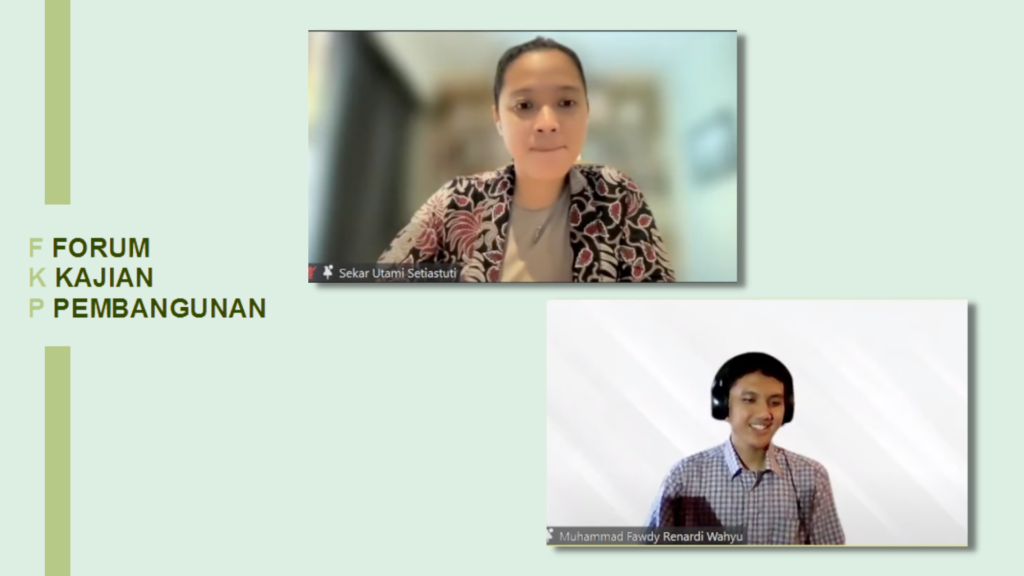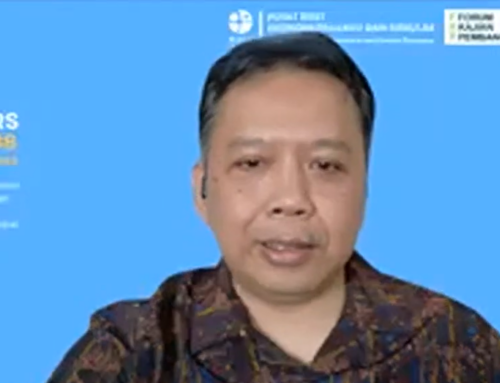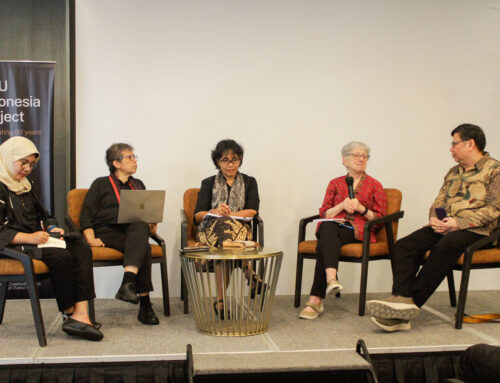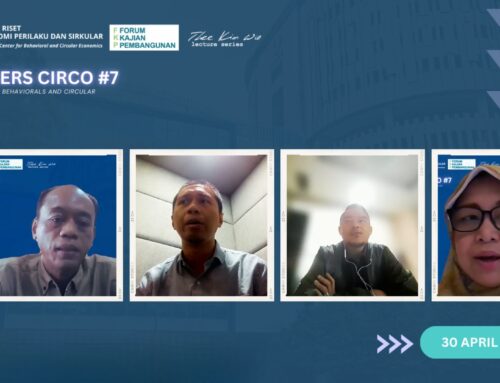FKP hosted by FEB UGM with Sekar Utami Setiastuti (FEB UGM). Friday, 25 February 2022.
KEY POINTS:
Two significant barriers associated with green energy projects are a lower rate of return compared to fossil fuel projects and a higher risk of investment compared to fossil fuel projects. The difficulty accessing external financing is also one of the main obstacles to green production. This study aims to develop an environmental dynamic stochastic general equilibrium (E-DSGE) model with banks and heterogeneous production sectors and evaluate the effects of monetary and fiscal policy on green production and emission. This study examines policy simulation of interest rates, carbon tax and green subsidy financing some preliminary findings were reported.
SUMMARY
- Sekar Utami Setiastuti from Fakultas Ekonomi dan Bisnis Universitas Gadjah Mada explains about her recent working paper on the growth agenda and financing green projects. This study is conducted with Arnita Rishanty and Nur M. Adhi Purwanto from Bank Indonesia.
- Two broad climate-related financial risks have been identified, first is the transition risks, the revaluation of carbon-intensive assets as a result of shocks related to the transition to a low-carbon economy, and second is the physical risks which are the economic damages of climate-related events. Monetary transmission channels are also likely to become increasingly exposed to climate-related risks, the risks are likely to have severe effects on the stability of the financial system.
- Climate change strategy implies a shift to low-carbon investments to allow firms to adopt technology to lower greenhouse gas emissions. However, green energy sources are expensive and could lead to losses for companies using renewable resources. Two significant barriers associated with green energy projects are a lower rate of return compared to fossil fuel projects and a higher risk of investment compared to fossil fuel projects. Therefore, green producers face difficulty in accessing external financing, as the private sector is reluctant to invest as it fears the environmental risk. In this context, making financing available for green projects will play a central role in allocating resources to sustainable investments. Monetary policy and its interest rate channel might play a significant role in green financing as well. Because of the associated risk, many banks are not interested in lending to the green energy sector. Hence, it is important to assess supporting policies to secure the flow of funds and growth in the green sector.
- This study aims to develop an environmental dynamic stochastic general equilibrium (E-DSGE) model with heterogeneous production sectors and evaluate possible central bank and fiscal policies towards a green and sustainable growth. The study evaluates the effects of monetary and fiscal policy on green production and emission and assess policies supporting green production (emission tax and green financing subsidy). This research contributes to the policy makers and academics in evaluating the effect of monetary and fiscal policy on emission and green production and whether policy instruments to boost green financing may limit the potential adverse effect of monetary and fiscal policy on the green sector.
- The model of this study is a closed economy environmental dynamic stochastic general equilibrium (E-DSGE) model. There are two types of intermediate good firms: green and non-green. The policy scenario in the modeling is carbon tax and green financing subsidy. The model is estimated to the Indonesian economy using quarterly data from Q1 2010 to Q4 2019.
- Some of the preliminary findings of the simulation are presented, including the effect of monetary policy (e.g. interest rate changes) on green production and the effect of carbon tax and green subsidy financing (fiscal policies). It is important to note that the model contains some assumptions required to simplify the estimation, and it does not solve the model to examine an endogenous transition to a greener economy in the long run. More policies can still be added to the model to look at different scenarios.





